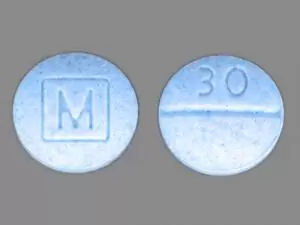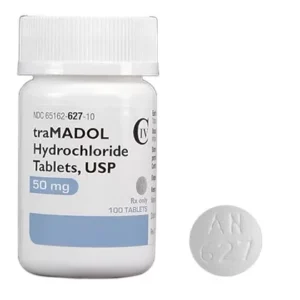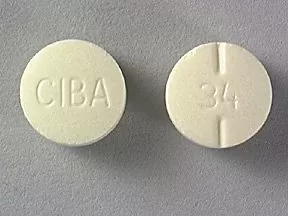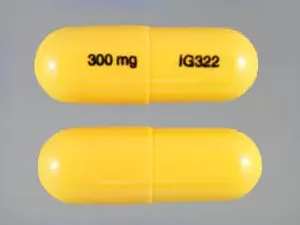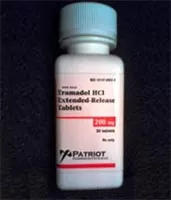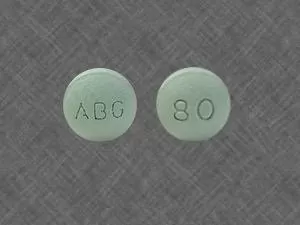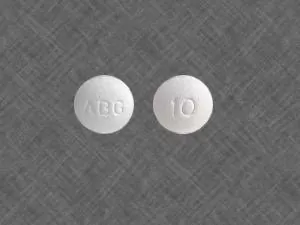Understanding Oxycodone 30 mg
Oxycodone is a formidable opioid medication, designed to manage severe pain that demands continuous treatment. In the realm of Oxycodone, the 30 mg tablet is one of the higher strengths, reserved for cases of extreme and unyielding pain. It’s important to note that Oxycodone, like all opioids, should be approached with caution and used responsibly.
When Is Oxycodone 30 mg Prescribed?
Oxycodone 30 mg is a medication intended for cases where other, less potent pain relievers have proven inadequate. Some common scenarios where it is prescribed include:
- Post-Surgical Pain: It is often administered to alleviate pain following surgeries, especially those that result in significant tissue trauma. It provides effective relief during the crucial post-operative phase.
- Chronic Pain Conditions: Individuals living with chronic pain conditions, such as cancer-related pain or severe injuries, may find relief through this. Chronic pain can severely impact one’s daily life, and Oxycodone helps improve quality of life for those affected.
- Breakthrough Pain: In certain cases, Oxycodone 30 mg serves as a “breakthrough” medication for individuals already on long-acting opioids. It offers rapid relief from acute and intense pain that might occur despite ongoing pain management.
How Does Oxycodone 30 mg Work?
Oxycodone 30 mg is a powerful opioid medication used to manage severe pain. Understanding how it works is essential for both patients and healthcare providers. It functions by binding to specific receptors in the central nervous system known as mu-opioid receptors. This interaction alters the perception of pain and modifies the way the brain responds to painful stimuli.
Oxycodone also has a calming effect on the central nervous system, inducing sedation and a sense of relaxation. This dual mechanism of action makes it highly effective for pain relief, especially in cases where other, less potent analgesics have proven ineffective.
When an individual takes Oxycodone 30 mg, the medication is absorbed into the bloodstream through the gastrointestinal tract. It then travels to the central nervous system, where it binds to the mu-opioid receptors. By doing so, Oxycodone not only mitigates the perception of pain but also influences the emotional and physical response to pain, providing significant relief to those dealing with severe and chronic pain conditions.
Dosage and Administration
The correct dosage of Oxycodone 30 mg should be determined by a qualified healthcare provider. They take into account the patient’s medical history, the severity of the pain, and their previous exposure to opioid medications. These tablets are typically taken orally, either with or without food. It is crucial to adhere to the prescribed dosage and administration guidelines to ensure both the medication’s effectiveness and safety. Dosages may differ from person to person, and any adjustments should be made solely under the guidance of a healthcare professional.
Side Effects
Oxycodone, like all opioid medications, can cause a range of side effects. Common side effects may include:
- Nausea and Vomiting: These side effects are often encountered, particularly when first starting the medication. However, they tend to improve over time as the body adjusts to the medication.
- Constipation: Opioids can slow down the digestive process, resulting in constipation. This side effect can be managed by maintaining adequate fluid intake and a diet rich in fiber.
- Sedation: Oxycodone can induce drowsiness and impair cognitive and motor function. Therefore, individuals taking this medication should avoid activities requiring mental alertness, such as operating heavy machinery.
- Respiratory Depression: In cases of overdose or misuse, opioids like Oxycodone can significantly slow down the respiratory rate, potentially leading to life-threatening respiratory depression. This is why responsible usage is of paramount importance.
- Dependence and Tolerance: With prolonged use, individuals may develop tolerance, necessitating higher doses to achieve the same effect, and dependence, which can lead to withdrawal symptoms upon discontinuation. Regular communication with a healthcare provider is essential to monitor the medication’s effectiveness and address concerns about dependence.
Risks and Precautions
As with any medication, Oxycodone comes with associated risks. It has the potential for misuse due to its euphoria-inducing effects. To ensure responsible use, it should be taken only as prescribed and kept securely stored to prevent unauthorized access.
The risk of overdose is also a concern. Taking higher doses than prescribed or combining Oxycodone with other opioids, benzodiazepines, or alcohol significantly increases the risk of overdose. Responsible use and strict adherence to the prescribed dosage are vital in mitigating this risk.
Additionally, Oxycodone is generally not recommended for children under 18 years of age due to the risk of severe breathing problems. Individuals with severe respiratory conditions, such as chronic obstructive pulmonary disease (COPD), may also be at a higher risk of respiratory depression.
Storing Of Oxycodone 30mg
- Secure Location: Keep your Oxycodone 30 mg tablets in a secure and discreet location, preferably a locked cabinet or a safe. This is essential to prevent unauthorized access, especially by children or individuals who should not have access to the medication.
- Room Temperature: Store the tablets at room temperature, typically between 68°F to 77°F (20°C to 25°C). Avoid exposure to extreme heat, moisture, and direct sunlight.
- Original Container: Keep the tablets in their original prescription bottle or packaging. This container should have a child-resistant cap to add an extra layer of security.
- Labeling: Ensure the prescription container is clearly labeled with your name, the medication’s name, dosage, and instructions for use. This information helps prevent confusion, especially if you have multiple medications.
- Keep Out of Reach: Store Oxycodone out of the reach of children, pets, and visitors to your home. Consider the use of additional childproofing mechanisms if needed.
- Keep an Inventory: Maintain a record of your medication, noting the quantity and the date of your last refill. Regularly check the container to ensure you have the correct amount of medication.
- Discreet Packaging: If you need to transport or carry your Oxycodone 30 mg tablets, use a discreet and secure container or bag to prevent loss or theft.
- Dispose of Unused Medication: Safely dispose of any unused or expired medication as soon as it is no longer needed. Many communities have drug take-back programs to help with proper disposal.
Properly storing Oxycodone 30 mg tablets is essential to ensure their safety and effectiveness, as well as to prevent potential misuse or accidental ingestion by unauthorized individuals.
Who should avoid taking Oxycodone tablet?
Oxycodone is a potent opioid medication used to manage severe pain. While it can be highly effective in pain relief, there are certain individuals who should avoid taking oxycodone due to potential risks and contraindications. Here are some of the groups of people who should avoid or use oxycodone with extreme caution:
- Allergies: If you are allergic to oxycodone or any of the components in the medication, you should not take it. Allergic reactions can be severe and life-threatening.
- Respiratory Conditions: Individuals with severe respiratory conditions, such as chronic obstructive pulmonary disease (COPD) or asthma. It should use oxycodone with caution, as it can lead to respiratory depression, which is a slowing of breathing.
- Gastrointestinal Conditions: People with gastrointestinal conditions like bowel obstructions, paralytic ileus, or inflammatory bowel disease may be at greater risk of complications when using oxycodone due to its potential to cause constipation.
- Head Injuries and Increased Intracranial Pressure: Oxycodone can potentially increase intracranial pressure, making it unsuitable for individuals with head injuries or conditions that may elevate intracranial pressure.
- Myasthenia Gravis: It can exacerbate the symptoms of myasthenia gravis, a neuromuscular disorder characterized by muscle weakness.
- History of Substance Abuse: Individuals with a history of substance abuse, especially opioids, may be at a higher risk of developing dependence on oxycodone.
- Pregnancy and Breastfeeding: Oxycodone use during pregnancy is generally discouraged, especially in the first trimester, as it may pose risks to the developing fetus. It can also pass into breast milk, potentially affecting the nursing infant.
- Elderly Individuals: The elderly are more susceptible to the sedative and respiratory-depressant effects of oxycodone and may be at an increased risk of falls and cognitive impairment. Lower doses and careful monitoring are often recommended.
- Liver or Kidney Impairment: People with severe liver or kidney impairment may require dose adjustments or may need to avoid oxycodone altogether, as the medication is metabolized in the liver and eliminated through the kidneys.
- Interactions with Other Medications: Oxycodone can interact with various other medications, such as other opioids, benzodiazepines, and certain antidepressants, which can increase the risk of respiratory depression. Always inform your healthcare provider about all the medications you are taking to avoid potential drug interactions.
Factors affecting intake of Oxycodone tablets
The intake of this tablets, like any medication, can be influenced by various factors, including medical, physiological, and psychological considerations. Here are some of the key factors that can affect the intake of this tablets:
- Medical Condition: The primary factor influencing Oxycodone intake is the underlying medical condition. Oxycodone is typically prescribed for severe pain, and the type and severity of the pain will determine the dosage and duration of use.
- Pain Severity: The intensity of the pain plays a significant role in determining the dosage of Oxycodone. A higher level of pain may necessitate a stronger dose, while mild pain might require a lower dose or alternative treatments.
- Tolerance: Over time, some individuals may develop tolerance to Oxycodone, meaning they require higher doses to achieve the same level of pain relief. Healthcare providers may need to adjust the dosage in response to tolerance.
- Age: Age can affect the intake of Oxycodone. Elderly individuals may require lower doses due to increased sensitivity to medications and potential side effects.
- Body Weight: Body weight can influence the effectiveness of Oxycodone. Larger individuals may need higher doses to achieve the same level of pain relief.
- Medical History: Pre-existing medical conditions, such as liver or kidney problems, respiratory conditions, or a history of substance abuse, can impact the intake of Oxycodone. These factors may require dose adjustments or alternative pain management strategies.
- Other Medications: The use of other medications can interact with Oxycodone, potentially enhancing or diminishing its effects. Opioids, benzodiazepines, and certain antidepressants are among the medications that can interact with Oxycodone, leading to increased risks of respiratory depression or other side effects.
- Psychological Factors: Psychological factors, including anxiety, depression, and psychological dependence, can influence the intake of Oxycodone. Some individuals may misuse the medication due to psychological distress or dependence, which can lead to inappropriate intake.
- Duration of Treatment: The intended duration of Oxycodone treatment is a critical consideration. Short-term use may have a different dosage regimen than long-term use. A healthcare provider should regularly assess the need for continued treatment.
- Environmental and Social Factors: Factors such as a patient’s living environment, social support, and access to healthcare can affect Oxycodone intake. Support systems can be crucial for managing pain effectively and ensuring responsible use.
- Healthcare Provider’s Guidance: The most important factor in Oxycodone intake is the guidance of a healthcare provider. They assess the individual’s specific situation, medical history, and pain management needs to determine the appropriate dosage and treatment plan.
- Risk of Dependence: Given the potential for dependence and misuse, the risk of developing a dependency on Oxycodone is a critical factor. Patients and healthcare providers should carefully weigh the benefits and risks before initiating and continuing treatment.
Strength of Oxycodone tablet
Oxycodone is a potent opioid medication known for its effectiveness in providing pain relief. The strength of an Oxycodone tablet is determined by the amount of oxycodone hydrochloride it contains. This tablets come in various strengths to accommodate the diverse needs of patients experiencing different levels of pain.
Common strengths of Oxycodone tablets include 5 mg, 10 mg, 15 mg, 20 mg, 30 mg, and 40 mg, with 30 mg being one of the higher doses. The choice of strength is based on the severity of the patient’s pain, their medical history, and their response to the medication. Higher strength tablets are typically reserved for individuals dealing with severe, chronic pain that requires strong analgesic support.
Oxycodone tablets, particularly those of higher strength, are often prescribed for individuals after major surgeries, severe injuries, cancer-related pain, or chronic pain conditions that have not responded well to other pain management strategies. These tablets offer effective relief by binding to opioid receptors in the central nervous system, modulating the perception of pain, and providing a sense of calm and relaxation.
Positive points regarding Oxycodone tablet
- Effective Pain Relief: It is highly effective in managing severe pain, providing patients with much-needed relief from conditions that have not responded to milder analgesics.
- Fast-Acting: It provides rapid relief, making it suitable for managing acute and breakthrough pain, such as post-surgical discomfort or cancer-related pain.
- Improved Quality of Life: For those suffering from chronic pain conditions, Oxycodone can significantly enhance their quality of life by allowing them to perform daily activities with reduced pain and discomfort.
- Individualized Treatment: The dosages are tailored to each patient’s specific needs, ensuring a personalized approach to pain management.
- Short-Term Use: After surgery or injuries, short-term use of Oxycodone can aid in a quicker recovery by alleviating pain, allowing patients to regain their mobility and strength.
- Management of Cancer Pain: It plays a critical role in alleviating the intense pain often associated with cancer, making it an invaluable tool in palliative care.
- Enhanced Functionality: Pain relief from Oxycodone can help individuals regain their ability to work, exercise, and maintain an active lifestyle.
- Support for End-of-Life Care: In hospice and end-of-life care, Oxycodone ensures that patients can experience comfort and reduced suffering in their final days.
- Customized Treatment Plans: Healthcare providers work closely with patients to develop treatment plans that address their pain while minimizing side effects and risks.
- Safe and Responsible Use: Under proper medical supervision and responsible use, the risk of dependence and misuse is minimized, allowing for effective pain management with fewer complication.
Correct way to store Oxycodone tablet
Storing Oxycodone tablets correctly is crucial to ensure their safety and effectiveness while preventing unauthorized access. Here’s the correct way to store Oxycodone tablets:
- Secure Location: Store Oxycodone in a secure, locked location such as a medicine cabinet, safe, or a lockbox. Prevent easy access, especially for children and individuals who should not have the medication.
- Room Temperature: Keep the tablets at room temperature (around 68°F to 77°F or 20°C to 25°C). Avoid exposing them to extreme heat, moisture, or direct sunlight, as these can affect the medication’s stability.
- Original Container: Keep the tablets in their original prescription bottle or packaging with a child-resistant cap. This packaging is designed to be secure and labeled with essential information.
- Labeling: Ensure the prescription container is clearly labeled with your name, the medication’s name, dosage, and administration instructions. This minimizes confusion, especially if you have multiple medications.
- Out of Reach: Keep Oxycodone out of the reach of children, pets, and any visitors to your home who should not have access to the medication.
- Inventory: Maintain a record of your medication, including the quantity and the date of your last refill. Regularly check the container to ensure you have the correct amount of medication.
- Discreet Packaging: If you need to transport or carry Oxycodone, use a discreet and secure container or bag to prevent loss or theft.
Properly storing Oxycodone tablets is essential to prevent misuse, accidental ingestion, and ensure the medication remains effective. If you have any questions or concerns about medication storage, consult with your healthcare provider or pharmacist for specific guidance.
FAQ on Oxycodone tablet
1. What is Oxycodone?
This is a powerful opioid medication used to treat severe pain that has not responded to other treatments.
2. How is Oxycodone typically prescribed?
It is prescribed in tablet form, and the dosage is determined by a healthcare provider based on the patient’s pain severity and individual factors.
3. How does it work to relieve pain?
It works by binding to specific receptors in the brain and spinal cord, altering the perception of pain and providing pain relief.
4. What are the common uses of this tablets?
It is commonly prescribed for post-surgical pain, cancer-related pain, chronic pain, and acute pain management when other treatments have proven inadequate.
5. What are the potential side effects of this tablets?
Common side effects may include nausea, constipation, drowsiness, and respiratory depression. However, the side effects can vary among individuals.
6. Can you become dependent on Oxycodone?
Yes, prolonged use can lead to physical dependence, where the body becomes reliant on the medication to function normally. This is why it’s essential to use under medical supervision.
7. What are the potential risks of misuse or overdose?
Misuse or taking higher doses than prescribed, especially when combined with other opioids or sedatives, can lead to overdose, which can be life-threatening.
8. Can you drink alcohol while taking?
Drinking alcohol while taking this medicine is not recommended. It can intensify the sedative and respiratory depressant effects, increasing the risk of side effects and overdose.


